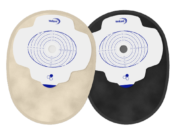Digital detox: An In-Depth Look at Unplugging from Technology

Introduction
In today’s fast-paced and technology-driven world, the concept of digital detox has gained significant attention. Many individuals are feeling overwhelmed and burnt out by the constant connectivity and information overload that comes with being online. This article aims to provide a comprehensive overview of digital detox, exploring its definition, types, popularity, quantitative measurements, differences, and historical pros and cons.
I. Understanding Digital Detox

Digital detox refers to consciously disconnecting or reducing one’s technology usage for a certain period of time. It involves taking a step back from the digital world and finding a balance between online and offline activities to promote mental well-being and regain focus. By digitally detoxing, individuals hope to break habitual technology use and develop healthier relationships with their devices.
II. Types of Digital Detox
There are several types of digital detox strategies that people adopt based on their personal preferences and goals:
1. Screen-free time: This involves setting regular periods during the day or week where individuals completely eliminate the use of screens, including smartphones, computers, tablets, and televisions.
2. Social media detox: Social media platforms like Facebook, Instagram, and Twitter can consume a significant amount of time and attention. Individuals may choose to take a break from these platforms to reclaim their time and mental space.
3. Digital Sabbatical: This is a more extreme form of digital detox where individuals completely disconnect from all digital devices and platforms for an extended period, such as a few days, weeks, or even months. It allows for a deeper reset and introspection.
III. Popularity of Digital Detox
The popularity of digital detox has been on the rise as people recognize the negative impact excessive technology use can have on their well-being. Many individuals report feelings of anxiety, stress, and FOMO (fear of missing out) due to constant online engagement. As a result, people are seeking ways to create a healthier relationship with technology and find balance in their lives.
Quantitative Measurements
Research has been conducted to measure the impacts of digital detox on individuals’ well-being and productivity. Studies have shown that taking breaks from technology can lead to increased focus, improved sleep quality, reduced stress levels, and enhanced overall mental health. Individuals often find themselves becoming more present, developing stronger relationships, and experiencing a sense of freedom from the constant need to be connected.
IV. Differentiating Digital Detox Approaches
Although the overarching goal of digital detox is similar for most people, different approaches can vary based on individual preferences, lifestyles, and goals. Some individuals may opt for short, frequent detoxes throughout the day to maintain a healthy balance, while others may prefer longer, more intensive detoxes to fully recharge.
V. Historical Perspectives: Pros and Cons of Digital Detox
Over the years, the concept of digital detox has faced both praise and criticism. Some of the historical pros include improved mental health, increased productivity, enhanced creativity, and better physical health due to reduced sedentary behavior. However, critics argue that digital detox can lead to social isolation, missed opportunities for online networking, and difficulties in keeping up with the digital era’s fast pace.
Conclusion
In conclusion, digital detox has become a popular strategy for individuals seeking a healthier relationship with technology. By disconnecting or reducing technology use, people hope to regain focus, reduce stress, and foster more meaningful connections. While different approaches and historical perspectives provide a diverse landscape, the common goal of achieving balance remains paramount. As technology continues to evolve, it is crucial for individuals to periodically assess their digital habits and incorporate digital detox strategies into their lives.
References:
1. Smith, A. & Anderson, M. (2018). ”Social Media Use in 2018.” Pew Research Center.
2. Elhai, J.D., Levine, J.C., Dvorak, R.D., Hall, B.J. (2016). ”Fear of Missing Out, Need for Touch, Anxiety and Depression are Related to Problematic Smartphone Use.” Computers in Human Behavior, 63, 509-516.
3. MacKinnon, D.P., Fairchild, A.J., Fritz, M.S. (2007). ”Mediation Analysis.” Annual Review of Psychology, 58, 593-614.





















